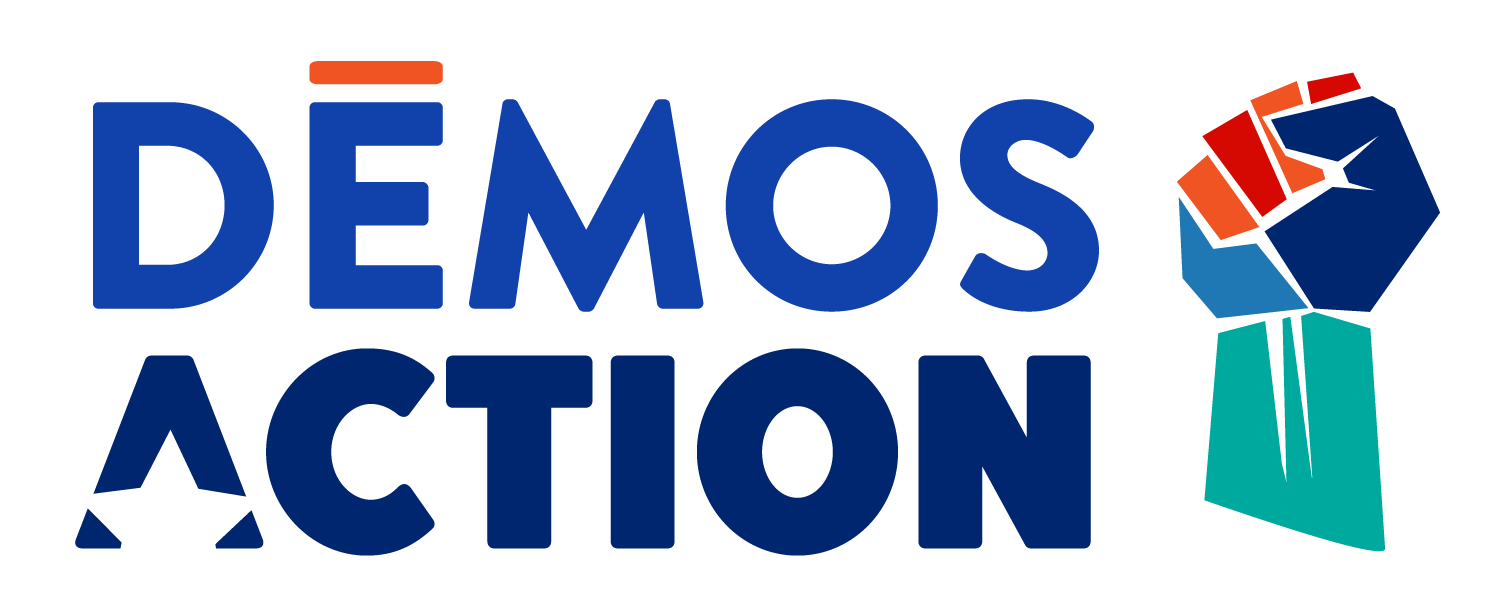Candidates and Voters of Color Drive Progress in 2018 Midterms
by Demos Action Political Director Adam Lioz
Democrats’ taking back the House and making critical gains in the states with strong popular vote majorities—fueled by high midterm turnout among people of color—were crucial steps in pushing back against our nation’s slide towards authoritarianism and building a more inclusive democracy.
This election proved that running more women and people of color on bold policy platforms is a winning strategy, as historic firsts punctuated these wins: the first Muslim and Native women elected to the U.S. House, the nation’s first openly gay male governor, and more than 100 women headed to Congress.
Led by inspiring candidates of color and an historic wave of grassroots activism, this campaign showed us that an inclusive, multi-racial populism is on the rise, and that directly addressing race-based exclusion from our economy and our democracy while centering big ideas such as unrigging the rules of our democracy is a winning path forward for Democrats in 2020 and beyond.
On the other hand, the GOP’s closing strategy—pointing the finger at immigrants, black people, and poor families to divide us and break down cross-racial solidarity among working families in order to cut health care and provide tax cuts to billionaires—has largely backfired, motivating strong turnout among people of color and alienating white suburban voters. It should be relegated to the dustbin of history where it belongs. Exit polls suggest the partisan divide between young and older voters is greater than ever before in modern history, and progressives must rise to the challenge of presenting a positive, multi-racial vision of America to keep these new voters fully engaged.
It was a good night for strengthening our democracy, with the Florida Rights Restoration Coalition leading the fight to restore voting rights to 1.4 million Floridians with felony convictions, and other pro-democracy ballot victories in Colorado, Maryland, Michigan, Missouri, Nevada, and other states.
Meanwhile, barriers to the ballot remain critical obstacles to a reflective and responsive democracy—and must be addressed urgently. Voters in Georgia faced long lines and unfair election administration by a chief elections official who was also a candidate for governor. And North Carolina and Arkansas passed restrictive voter ID laws.
Several exciting candidates of color ran bold, race-forward progressive campaigns that have come closer to winning than most observers thought possible just one year ago. Andrew Gillum is within striking distance of becoming Florida’s first black governor pending a recount. Stacey Abrams may become the nation’s first black woman governor after a possible runoff thanks to her success in driving turnout among people of color in the red state of Georgia. Exciting candidates of color such as Lucy McBath in GA-6 were able to win down-ballot in part because of this energy and record turnout among core Democratic constituencies.
Demos Action did our part to win back the House and make other gains by helping to arm candidates with the bold policy ideas that can inspire the New American Demos to come out to the polls, and directly training dozens of campaigns on our Race-Class Narrative principles for pushing back effectively on the right’s dog-whistle divisive rhetoric. Our skilled and dedicated allies in the progressive movement ensured that the energy that began as resistance to Trump was channeled effectively into millions of calls and door-knocks to shift power.
The lessons for 2020 and beyond are clear. First, Democrats need to continue to support candidates of color running on bold, race-forward platforms who can mobilize the millions of voters—especially young people and people of color—who were not invited into the process in 2016 and 2018. Next, progressives must make sustained investments in grassroots organizations such as those represented in Demos’ Inclusive Democracy Project, which supports racial justice organizations to play leadership roles in democracy reform efforts across the country.
Finally, when Democrats take power in states and at the federal level, they must immediately work to unrig the rules that provide conservatives with unfair advantages at the polls—starting with reducing barriers to registering to vote and casting ballots, and replacing big-money, donor class-driven elections with robust programs that put voters and small donors at the center of our democracy.
This week’s results can start us down a path to a democracy where our leaders reflect our communities, values, and priorities; where the strength of our voices doesn’t depend upon the size of our wallets; and where freedom is for everyone, no exceptions.
